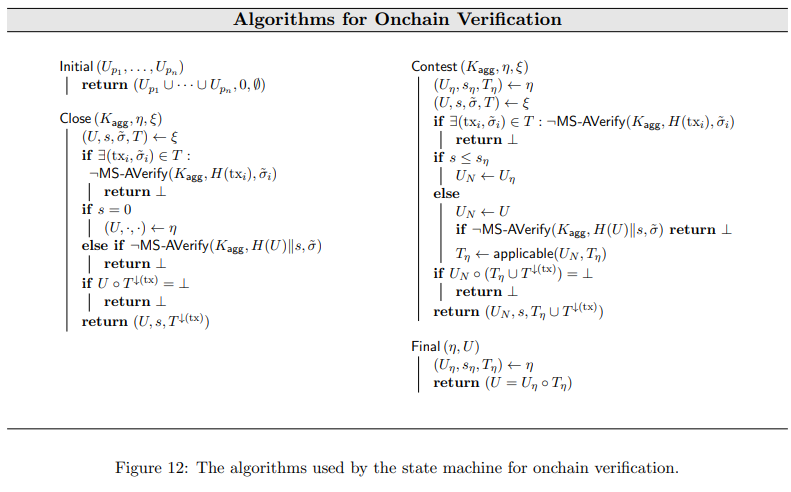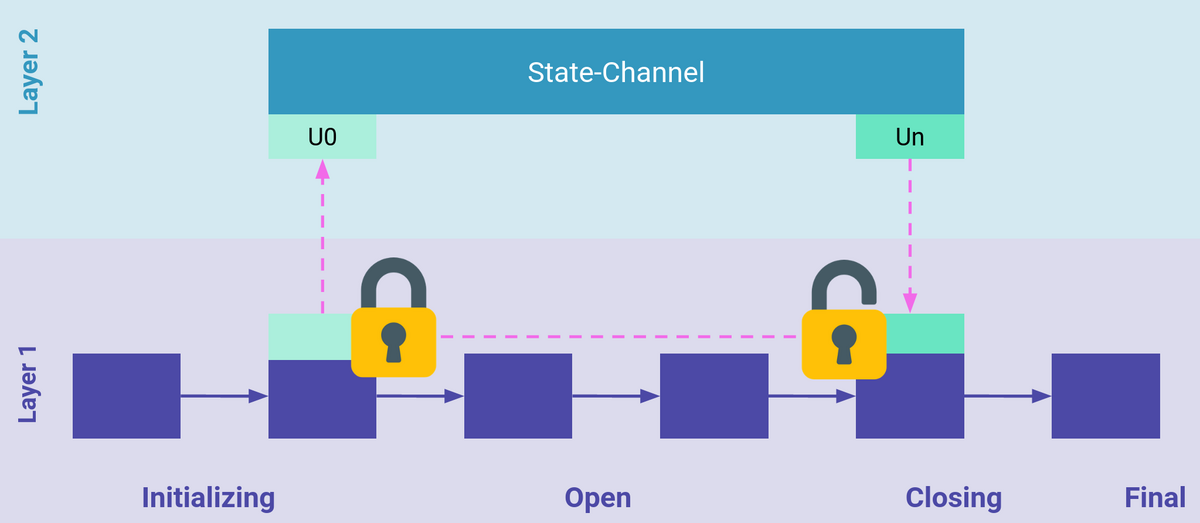
Cardano’s Hydra protocol aims to solve one of the network’s glaring challenges. While Charles Hoskinson’s network reigns supreme in terms of decentralization and security, it struggles with scalability.
Fortunately, Input Output Global (IOG) has set a plan to optimize the Cardano network and propel the ecosystem into new territory. In theory, Hydra brings unprecedented throughput and network speeds that will slay Cardano’s hoards of rivals.
Can Hydra solve the blockchain trilemma and thrust Cardano into pole position in the fiercely competitive Layer One race? Or is the Layer-2 scaling solution yet another lofty promise that will inevitably disappoint ADA holders?
Table of Contents
What Is Cardano’s Hydra?

If you’re a fan of Cardano, you’re no doubt familiar with the chain’s habit of naming its protocols after mythical symbols, like Ouroboros.
Sponsored
Inspired by Ancient Greece’s multi-headed serpent, Hydra is a Layer-2 scaling solution designed to boost the capabilities of the Cardano ecosystem. Simply put, Hydra helps the Cardano blockchain process more transactions faster.
Why is this so important? Suppose the Cardano blockchain wants to realize its vision to become the world’s leading decentralized blockchain and host millions of users worldwide. In that case, it’ll need to handle significantly more transactions than it can right now.
Sponsored
With Hydra, Cardano aims to address the seemingly endless issues of latency and low throughput, setting the stage for an era where ADA fulfills its potential and dominates the crypto market.
As we dive under the hood, you’ll find that Cardano’s Hydra functions similarly to other popular Layer-2 scaling solutions like the Bitcoin (BTC) Lightning Network.
How Does Hydra Work?
One look at Input Output’s paper on Hydra is enough to make your spin. The paper is jam-packed with blisteringly complicated algorithms (see below) and jargon that leaves you with more questions than answers.

The gist of it is this:
Cardano’s Hydra protocol operates independent isomorphic state channels and runs alongside the Cardano mainnet. “Isomorphic” might sound like complex technical jargon, but it simply means that the off-chain protocol mirrors the on-chain one. These state channels are called Hydra Heads.
These heads take transactions and process them off-chain, ensuring swift and efficient operations. This amplifies the speed of transactions and ensures that the main chain remains unburdened.

This horizontal scaling solution allows the Cardano network to grow sustainably. As the network grows and demand increases, more heads (state channels) can be added. In theory, this parallel processing capability ensures that Hydra should effortlessly handle the increased strain as Cardano’s adoption surges.
Additionally, Hydra-Nodes bypass Cardano’s 20-second block time limit. This means independent state channels can process transactions outside the mainnet’s limitations.
Why Does Cardano Need Hydra?
As it stands, Cardano is arguably the most decentralized blockchain in the Web3 world. Written in specifically designed programming languages like Haskell and Plutus, the open-source network is remarkably secure, with no history of significant network hacks or downtime. That being said, Cardano struggles with scalability.
Data shows that Cardano is lagging behind other Layer One blockchains regarding daily transactions, including altcoins with vastly smaller market caps like Aptos (APT) and Avalanche (AVAX).
Another common metric for blockchain scalability is the maximum number of transactions per second (TPS) a network can theoretically process. Cardano is commonly slated to handle ~1,000 TPS, falling far short of rival Layer Ones like Solana (SOL), which is theorized to tap the 65,000 TPS mark.
Cardano’s noble vision of bringing blockchain products like decentralized finance (DeFi) and NFTs to low-resource nations will be difficult if it can only handle 1,000 transactions per second.
If the network cannot sustain and provide for its users, it will inevitably pivot to more performant networks. This reduces demand for the ADA cryptocurrency, which could harm ADA’s price.
Fortunately, Hydra is expected to resolve these concerns over time and catapult Cardano’s TPS to new heights. Enthusiastic ADA bulls have cited gargantuan figures and claimed throughputs of over one million TPS, drawing cynicism from the wider crypto community.
Cardano Scaling Criticisms
Cardano Node and Stake Pool Operators may have gotten a bit carried away in euphoria, spreading a narrative that Hydra will elevate Cardano’s TPS to over one Million. Fortunately, Cardano developers were quick to chime in and debunk the misleading myth.
No matter how innovative, every new blockchain improvement faces its share of skepticism and critique. Despite its promising architecture, Cardano’s Hydra hasn’t been immune to this.
Input Output Global, the development team behind much of Cardano’s architecture, is exploring alternative scaling methods. Alongside Hydra, Input Endorsers have been touted as a potential Layer-1 scaling solution for the Cardano blockchain.
According to Input Output Global, this alternative method could boost Cardano’s TPS by a multiple of 20x. However, not everyone is convinced.

Renowned crypto researcher Justin Bons didn’t waste time digging through Input Endorsers capabilities. Bons initially suggested that the alternative scaling method would bring Cardano up to 1-2 thousand TPS before adjusting his estimates to a more conservative 400-500 TPS based on Cardano’s current speeds.
Many within the Cardano community argued that focusing solely on TPS is an oversimplification. They championed the idea of Outputs Per Second (OPS) as a more holistic measure of a network’s capabilities.
What Does Hydra Mean for ADA Price?
If Cardano’s Hydra protocol is successful in its mission, ADA fans and supporters will have plenty to be happy about. Boosting the network’s capabilities will be a boon for ADA. A scalable Cardano network means more dApps, smart contracts, and transactions, potentially leading to increased demand for ADA.
Being able to host more users and process significantly more transactions will make Cardano a likely home for established Web 2 businesses and emerging startups that are looking to integrate blockchain technology into their platforms.
Unlike its biggest rival, Ethereum (ETH), ADA has a capped maximum supply. If more businesses opt to base their operations on the Cardano network, demand for the network’s native currency increases without being hampered by a growing token supply.
On the other hand, if Hydra fails to deliver its promises long-term, Cardano will struggle. If the network can’t support a growing number of Cardano wallets and transactions, potential users will flock to competitors that boast greater scalability.
Cardano Hydra Pros and Cons
While the Cardano community would argue that Hydra is a net positive for the ecosystem, it’s not without its faults. Let’s look at the pros and cons of this intriguing protocol and shed some light on how it impacts the Cardano blockchain.
Pros
- A More Capable Network – Hydra’s primary promise is scalability. Introducing state channels that operate off-chain significantly boosts Cardano’s transaction processing capabilities and ensures the network can handle a surge in demand.
- Efficiency – With Cardano’s Hydra, transactions are processed faster and more efficiently. This enhances user experience and makes Cardano a more attractive platform for developers and businesses.
- Decentralization – Unlike some scalability solutions that compromise on decentralization, Hydra maintains Cardano’s decentralized ethos. The protocol ensures that the network remains secure and decentralized as it scales.
- Flexibility – Hydra’s design allows for adding more heads (state channels) as the network grows. This means Cardano can adapt to increasing demands without major overhauls.
Cons
- Complexity – Implementing a Layer-2 solution like Hydra adds a layer of complexity to the Cardano network. This could pose challenges in terms of development, maintenance, and troubleshooting.
- Adoption Curve – While Hydra promises enhanced scalability and efficiency, its success hinges on adoption. Developers, businesses, and users need to embrace this new protocol for its benefits to truly manifest.
- Unrealistic Expectations – The excitement around Hydra has led to some inflated expectations, especially concerning transaction speeds. Managing these expectations and ensuring clarity within the community is crucial.
- Potentially Insufficient? – Even with Hydra fully enabled, forecasts suggest Cardano’s maximum TPS still wouldn’t reach more than 10,000. With alternative Layer Ones like Solana expecting to break the six-figure barrier theoretically, Cardano still risks being left behind by more performant blockchains.
On the Flipside
- Hydra is just one of many scaling solutions discussed amongst the Cardano community. It is the be-all-and-end-all of Cardano’s growth potential. Some savvy developers within Cardano’s vast community may create and propose an alternative at some point in the future that will eclipse Hydra’s capabilities.
Why This Matters
Cardano is one of the cryptocurrency industry’s largest and most popular Layer One blockchains. If you’re an avid Cardano fan or ADA bull, knowing the potential and limitations of this Layer-2 scaling solution will help you make informed decisions in the crypto market.
FAQs
There are differing reports on how fast Hydra is and what it’s capable of. Early claims suggested that each Hydra Head can handle ~1,000 TPS.
Hydra will increase the Cardano network’s scalability by allowing certain transactions off-chain into state channels. This reduces strain on the mainnet and allows the network to scale horizontally.
The Hydra team is working with Cardano to provide the network with Layer 2 scaling solutions. According to Proof of Cardano, Hydra regularly tops weekly developer activity records.
